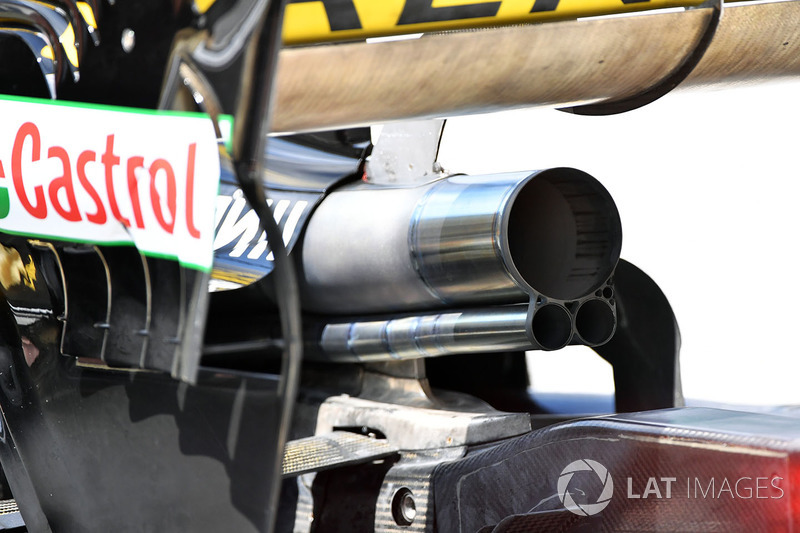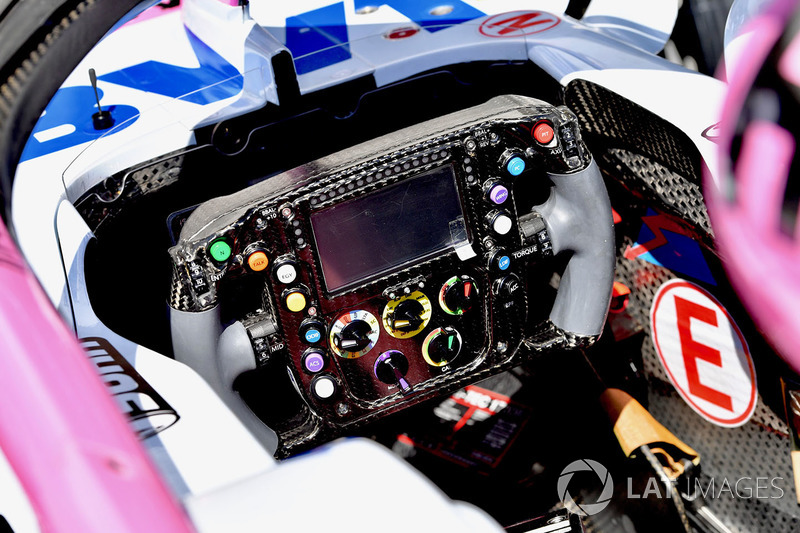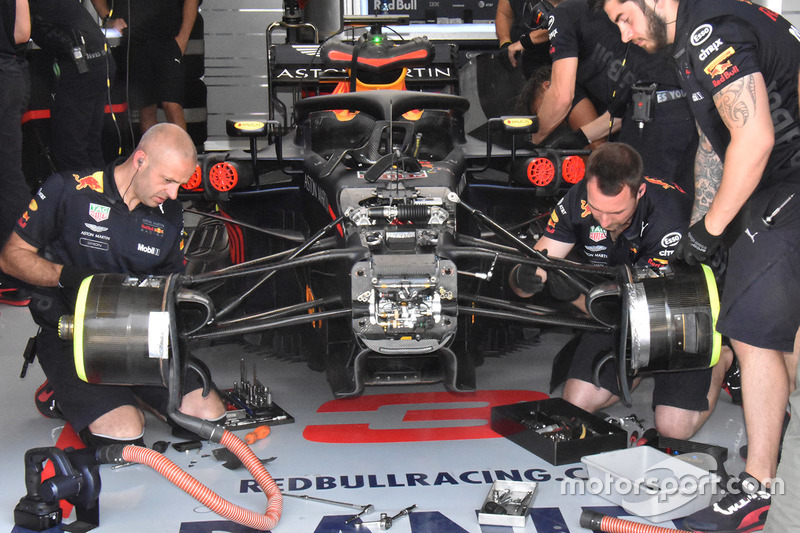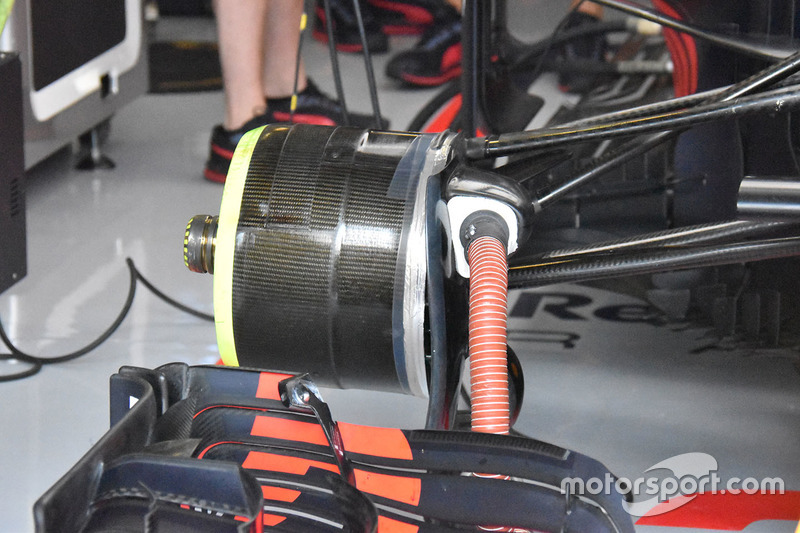Giorgio Piola and Sutton Images showcase the latest Formula 1 technical developments on show in the Budapest pitlane at the Hungarian Grand Prix.
Renault Sport F1 Team R.S. 18 exhaust

Photo by: Mark Sutton / Sutton Images
A look at Renault’s exhaust and wastegate solution, which is angled upward in order that it blows the underside of the wing to increase downforce.
Renault Sport F1 Team R.S. 18 front wing detail

Photo by: Mark Sutton / Sutton Images
Renault has adapted its latest front wing design further for the Hungaroring, stitching in a filler that now divides the slot in the mainplane, altering the way in which the wing operates.
Williams FW41 steering wheel

Photo by: Jerry Andre / Sutton Images
Williams’ use of a butterfly-style shaped steering wheel means that the LCD display is mounted in the dashboard instead.
Force India VJM11 steering wheel

Photo by: Jerry Andre / Sutton Images
Contrast that to the steering wheel setup used by Force India, which houses the LCD display as well as the multitude of switches and rotaries that adjust various settings on the car and power unit.
Red Bull Racing RB14 front detail

Photo by: Giorgio Piola
Setup work being done on Daniel Ricciardo’s suspension as the mechanics try to help him get the best from his RB14 this weekend.
Williams FW41 rear wing detail

Photo by: Giorgio Piola
Williams is utilising a much larger hooped-style T-Wing which also features a slot in the upper element.
Stoffel Vandoorne, McLaren MCL33

Photo by: Mark Sutton / Sutton Images
A rearward view of the McLaren MCL33 which is using an engine cover with three heat-rejection outlets on its spine. The flaps on the trailing edge of the cooling outlet have also been widened to encourage airflow to tumble out.
Red Bull Racing RB14 front brake detail

Photo by: Giorgio Piola
The right-front brake drum on the RB14 was fully enclosed during Free Practice in order to retain the heat within the drum.
Red Bull Racing RB14 front brake detail

Photo by: Giorgio Piola
On the left-hand side of the RB14 a window was opened up in the surface of the drum in order that any heat generated under braking be dispersed.
Force India VJM11 front brake detail

Photo by: Giorgio Piola
The right-hand brake drum on the Force India VJM11 has several windows cut into the surface above the brake disc in order to dissipate heat generated under braking.
Force India VJM11 front brake detail

Photo by: Giorgio Piola
On the left-hand side of the VJM11 there are less windows cut into the brake drum to release heat generated under braking. This promotes heat transfer between the wheel rim and, subsequently, the tyre in a different way.
Source: Read Full Article
